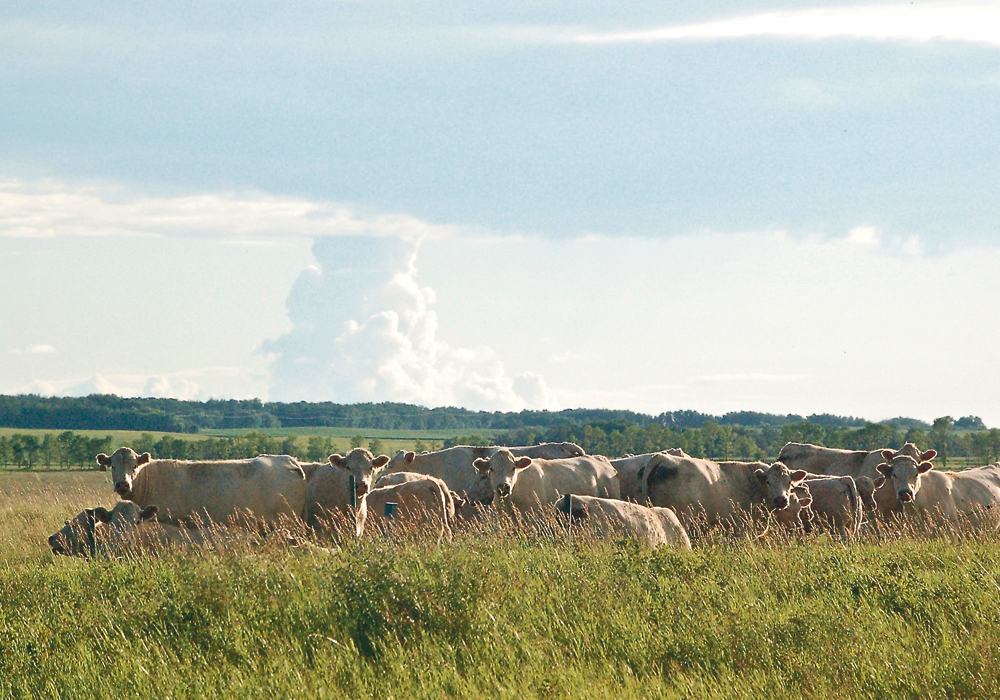Zero tillage is a classic example of a win-win in Canadian agriculture.
By eliminating or minimizing tillage in the 1980s and 1990s, farmers reduced soil erosion and improved their bottom lines because they spent less money on the tractors, equipment and diesel fuel required for frequent tillage.
It’s hard to duplicate the success of zero tillage, but scientists and soil conservation advocates are hoping to find a practice that reduces greenhouse gas emissions and improves profits on Canadian farms.
“With agriculture there’s rarely any win-win situations, where … we’re reducing greenhouse gas emissions and everything gets better,” said Roland Kroebel, an Agriculture Canada scientist in Lethbridge who studies climate change and greenhouse gas emissions.
Read Also

Petition launched over grazing lease controversy
Battle continues between the need for generation of tax revenue from irrigation and the preservation of native grasslands in southern Alberta rural municipality.
Identifying such a situation is critical for cutting GHG emissions from agriculture because Canadian farmers are in the business of producing food and selling that food at a profit.
They’re not in the save the world business.
“Is this practice even feasible economically? If not, it’s not going to be adopted,” said Henry Janzen, an Agriculture Canada researcher who works down the hall from Kroebel at the Lethbridge research centre.
“That’s what we’re all looking for. That’s what all the experimentation is about,” Kroebel added. “Because we know once we get that (win-win practice) on the market, everybody is all over it.”
Agriculture Canada is trying to find a win-win scenario for GHG emissions. On its website there’s a list of 20 research projects, all studying ways to reduce farm emissions or store more carbon in the soil.
Six of the projects are studying greenhouse gases related to livestock, forage and grasslands. The grassland and forage research is significant because there are 36 million acres of native rangeland and 34 million acres of annual and perennial tame forages in the country, the Canadian Forage and Grassland Association (CFGA) said in a statement.
One of the projects is called High Performance Management Systems To Reduce Greenhouse Gases in Canada’s Forages and Grasslands.
The CFGA is leading the research for this project at five farms in Manitoba and a research farm near Brookdale, Man.
The five livestock producers in the project have adopted a variety of practices, such as bale grazing, rotational grazing, balanced fertility and annual crop integration.
The CFGA wants to know if and how these practices affect GHG emissions from pastures and grasslands.
“Grasslands around the world warrant significant attention when discussing GHGs due to their sheer size, whether they are serving as a source, sink, or reservoir,” said Cedric McLeod, CFGA executive director. “CFGA saw a real need to lead (this) project and paint a national picture as to how impactful these areas are in reducing greenhouse gases in Canada.”
Scientists have pinpointed one practice that cuts GHG emissions from cattle and improves performance — high quality feed. When cattle consume high quality feed they emit less methane.
That works well in a feedlot, where producers can control what cattle eat, but less so on a pasture. That’s because pasture and hay quality depend on the weather and the time of year.
It’s possible to enhance pasture and forage quality in other ways, but those methods are not free.
“Then you start talking about things like fertilization, more seeding, better (variety) selection,” Kroebel said. “That becomes an effort and an expense.”
The Manitoba project, studying practices on five farms, will help tell the story of forage producers and their contributions to the environment, said Duncan Morrison, Manitoba Forage and Grasslands Association executive director.
“We want to showcase the results from the way these families are farming and the management systems they are utilizing. It’s time to add the carbon equation to the decision mix and bolster the biodiversity, water management … and producer profitability.”
Contact robert.arnason@producer.com
















